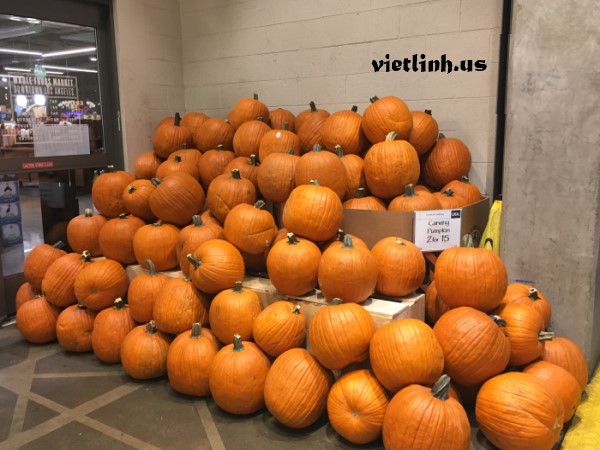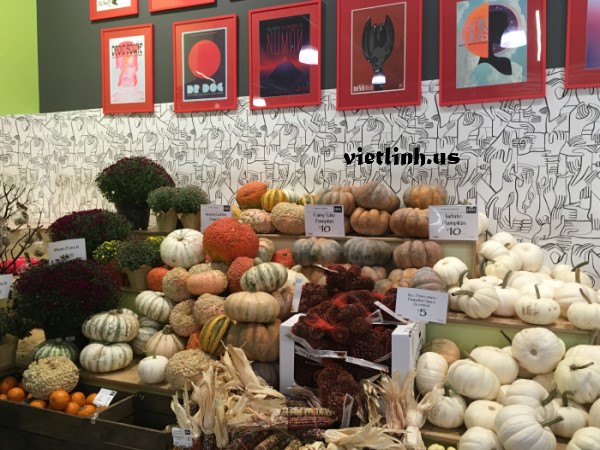Pumpkin is a nutritious winter squash with different health values. Pumpkin contains necessary nutrients for our health such as potassium, iron, and vitamins (A, C, B1, B2, B5, B6, PP). The squash is also a good source of carbohydrate and fiber. The rich content of beta carotene, which is often converted into vitamin A, makes pumpkin high in antioxidant property. The squash is beneficial for human eyes, skin, and immune system. Pumpkin is safe for patients with gout, high blood pressure and hypertension. It also helps reduce the risks of cancer, obesity and heart diseases.

According to Vietlinh, pumpkin flesh can be baked, made as pie, or cooked a soup. Pumpkin seeds can also be eaten, and its leaves can be used to make vegetable soup. Pumpkin soup and pie are especially preferred during Halloween and Thanksgiving in countries such as the US and Canada.
For Halloween, pumpkin can be used as jack-o'-lantern. After cutting the top of the pumpkin or turnip, the fruit’s flesh is taken out. Then a side of the pumpkin becomes a face, which is carved and decorated into. A candle will be placed inside of the pumpkin so that it can light up the decorated face in the dark. Jack-o’-lanterns are often put in front of the doors. Traditionally, in addition to decoration, people believe that the fruit lanterns can protect house owners from bad spirits and scary ghosts.

In addition to the common Cucurbita pepo pumpkin with orange skin, Vietlinh notices that there are different varieties of pumpkin such as heirloom pumpkin squash, white pumpkin, fairy tale pumpkin or warty goblin pumpkin. Some of them are not only used for decoration, but also cooked into foods and eaten.
Composed by Lynn LV. - Viet Linh